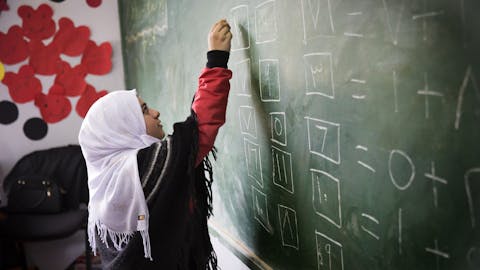🌈 Rainbows in the Dark: When the Internet Isn’t Safe, and the System Isn’t Ready

Understanding the Online Realities of Filipino Girls and LGBTQIA+ Children
Published by Terre des Hommes Netherlands – Philippines
“I knew what was happening was wrong… but who would believe me?”

In the age of likes, livestreams, and DMs, children are more connected than ever—but also more at risk. In the Philippines, known as the epicentre of livestreamed child sexual abuse, the internet has become both a refuge and a threat. For many Filipino girls and LGBTQIA+ children, the screen offers a false promise of freedom—only to expose them to grooming, coercion, and exploitation.
This is the harsh reality uncovered by Rainbows in the Dark, the first-ever study in the Philippines that centres the experiences of girls and LGBTQIA+ youth in the fight against Online Sexual Abuse and Exploitation of Children (OSAEC).
Conducted across Bohol, Cebu, and Taguig City, this research under Project CONEC engaged over 1,800 participants—children and youth, their families, teachers, community leaders, and frontline responders. The findings are both urgent and painful: children know about abuse, but they don’t report it. They fear judgement, shame, being outed, or worse—being blamed.

🔍 What We Found
🧒 Children Know, But They Don’t Report
- 90% of children know where to seek help.
- But only 1 in 3 ever do.
- Most turn to friends, not systems.
Fear, shame, and stigma—especially among LGBTQIA+ youth—keep them silent.
Kung sabihin ko, baka ako pa ang mapahiya. Translated as: If I say it, I might just embarrass myself.
— Trans youth, Bohol
🌐 Girls and LGBTQIA+ Children Are Targeted
- Girls are often victimised by people they know—groomed through emotional manipulation.
- LGBTQI youth are lured by fake online identities offering friendship or romance.
- Trans and non-binary youth are least likely to feel safe accessing help (only 45%).
💔 Abuse Hurts Beyond the Screen
OSAEC survivors report mental health struggles—depression, anxiety, self-harm, and isolation. Girls drop out of school or enter unsafe relationships. LGBTQIA+ youth retreat into silence. Boys, conditioned by toxic masculinity, often deny the abuse happened at all.
🚧 The System Isn’t Working—for Those Who Need It Most

While protection laws exist, the study found serious cracks in the system:
- Child Protection Committees (BCPCs and LCPCs) are inactive or under-resourced.
- Schools, the first place children disclose abuse, are unequipped to respond inclusively or safely.
- Service providers lack training in gender-sensitive, trauma-informed care.
- No shelters or recovery services are tailored to LGBTQIA+ youth.
When I posted my story online, I just wanted someone to say I mattered.
— 16-year-old lesbian survivor
✨ Rays of Hope
Despite the darkness, Rainbows in the Dark also surfaced promising practices:
- Peer education programs, where children learn from and support each other
- Parent learning sessions on OSAEC, gender, and positive discipline
- GAD focal persons and Purok Leaders linking families to services
- Scholarships and livelihood programs for LGBTQIA+ youth in Cebu
💬 What Children and Adults Say Must Be Done
Children, parents, and communities offered clear, actionable ideas:
- Strengthen families through positive parenting and gender-affirming support.
- Train schools, LGUs, and responders in inclusive protection protocols.
- Create safe spaces, both offline and online, for girls and LGBTQIA+ youth.
- Develop local ordinances and enforce OSAEC laws that recognise gender-based vulnerabilities.
- Let children—not just adults—shape protection policies and programmes.

🧡 For Parents: How to Be a Gender-Affirming Ally at Home
Creating safer online spaces starts at home. The study reminds us that the first protection a child needs is to be seen and accepted for who they are.
Here are key reminders for parents and caregivers:
- Listen without judgement.
Children often fear being blamed or shamed. When they open up, respond with care, not correction. - Affirm your child’s identity.
Whether your child is a girl, boy, or identifies differently—your support can protect them from harmful validation-seeking online. - Ask, don’t assume.
Start conversations with curiosity, not conclusions. Ask what apps they use, how they feel online, and what they need from you. - Model safe and respectful behaviour.
Children observe how adults treat others. Inclusive language, respectful boundaries, and accountability at home go a long way. - Educate yourself.
Understanding SOGIESC (Sexual Orientation, Gender Identity and Expression, and Sex Characteristics) and digital safety equips you to guide your child better. - Normalize seeking help.
Let your child know they can always come to you or another trusted adult. Reinforce that no issue is too “small” to talk about. - Be involved without invading.
Co-create boundaries. It’s okay to guide their online activity—but explain why, and do it with love, not fear. - Celebrate their uniqueness.
Make home a place where your child feels proud—not pressured—to be who they are.
💬 Why It Matters
The internet is not neutral. For girls and LGBTQIA+ children, it reflects and amplifies the same harms they face in real life—discrimination, invisibility, and violence.
Rainbows in the Dark is a call to listen without judgement. To see the child behind the gender label. To believe survivors. To act—not later, not tomorrow, but now.
Because no child should be forced to trade their safety for acceptance.
Because no rainbow should be left in the dark.

📘 Access the Study
If you would like to co-create safer online spaces for children—especially those often left behind—get in touch:
📧 philippines@tdh.nl
🌐 Follow us: https://www.facebook.com/TerredesHommesNLinPh




